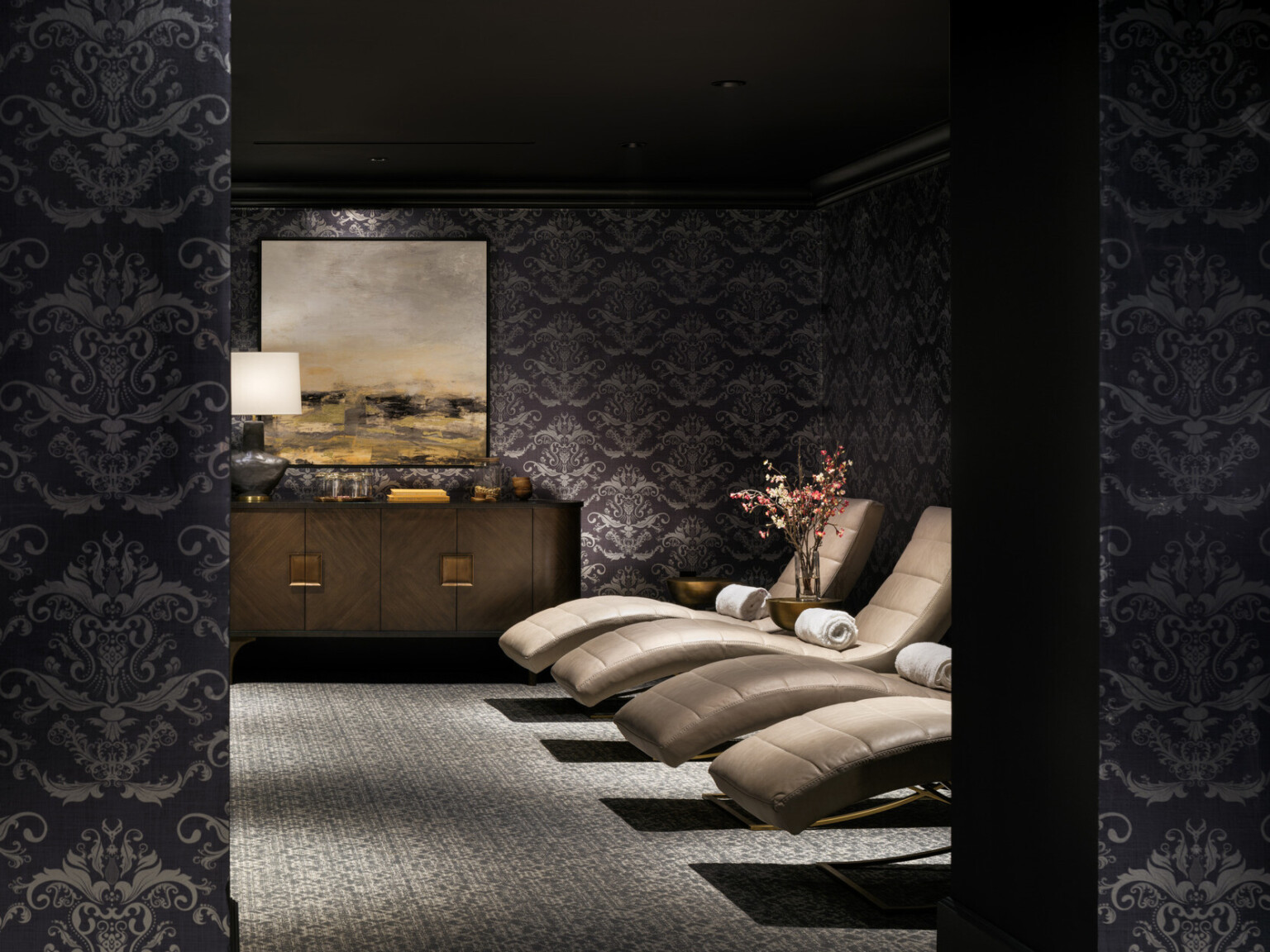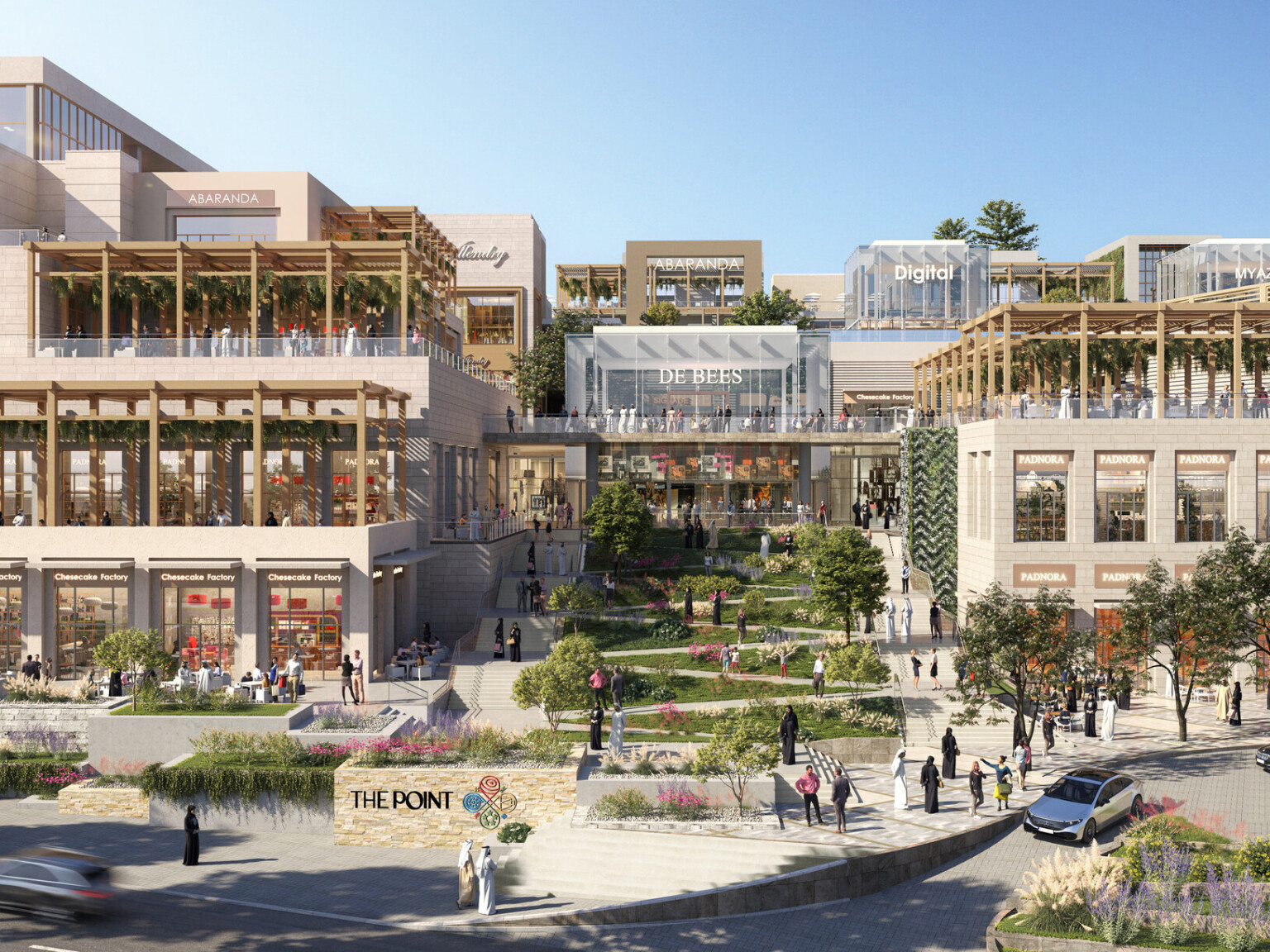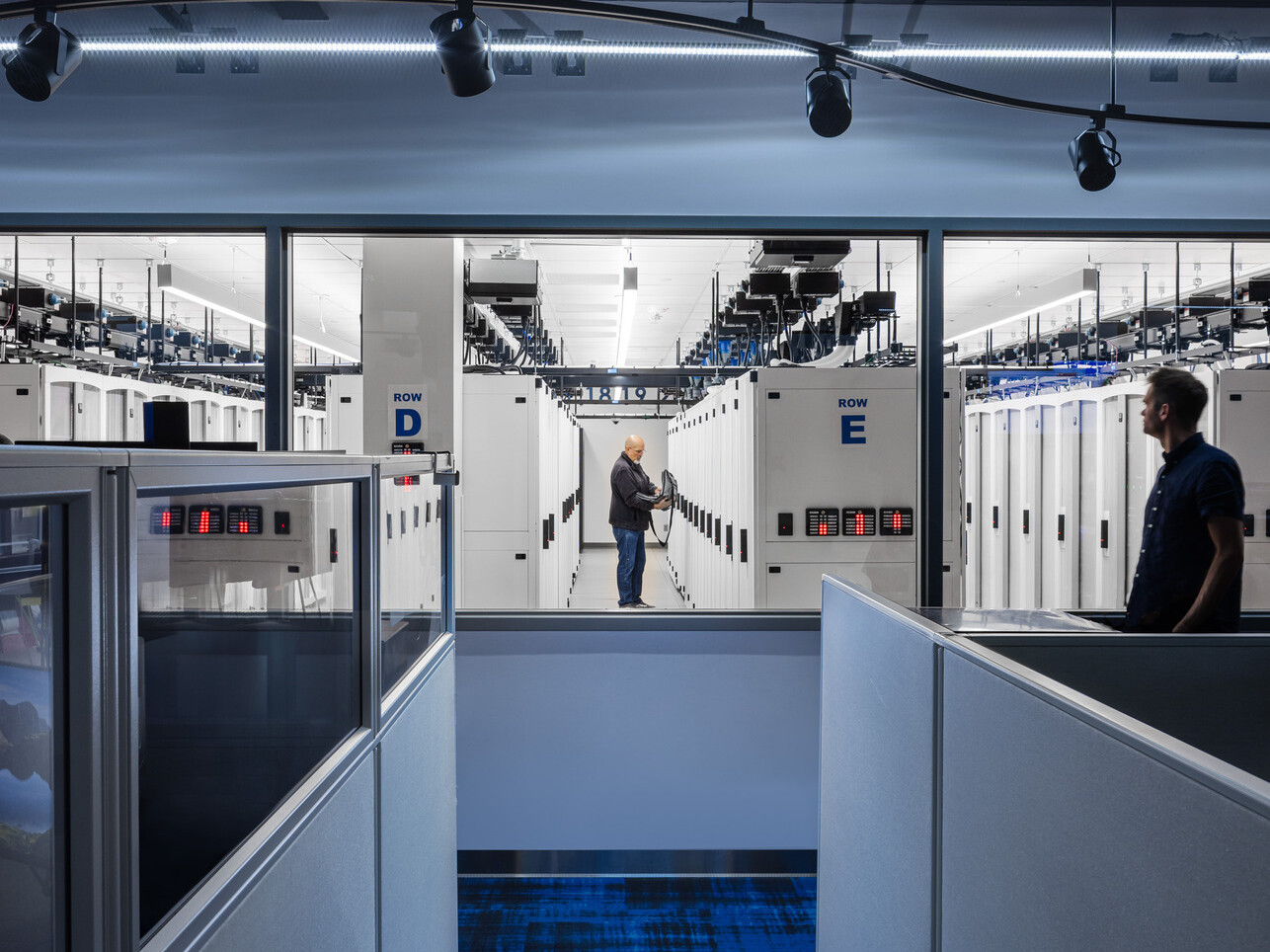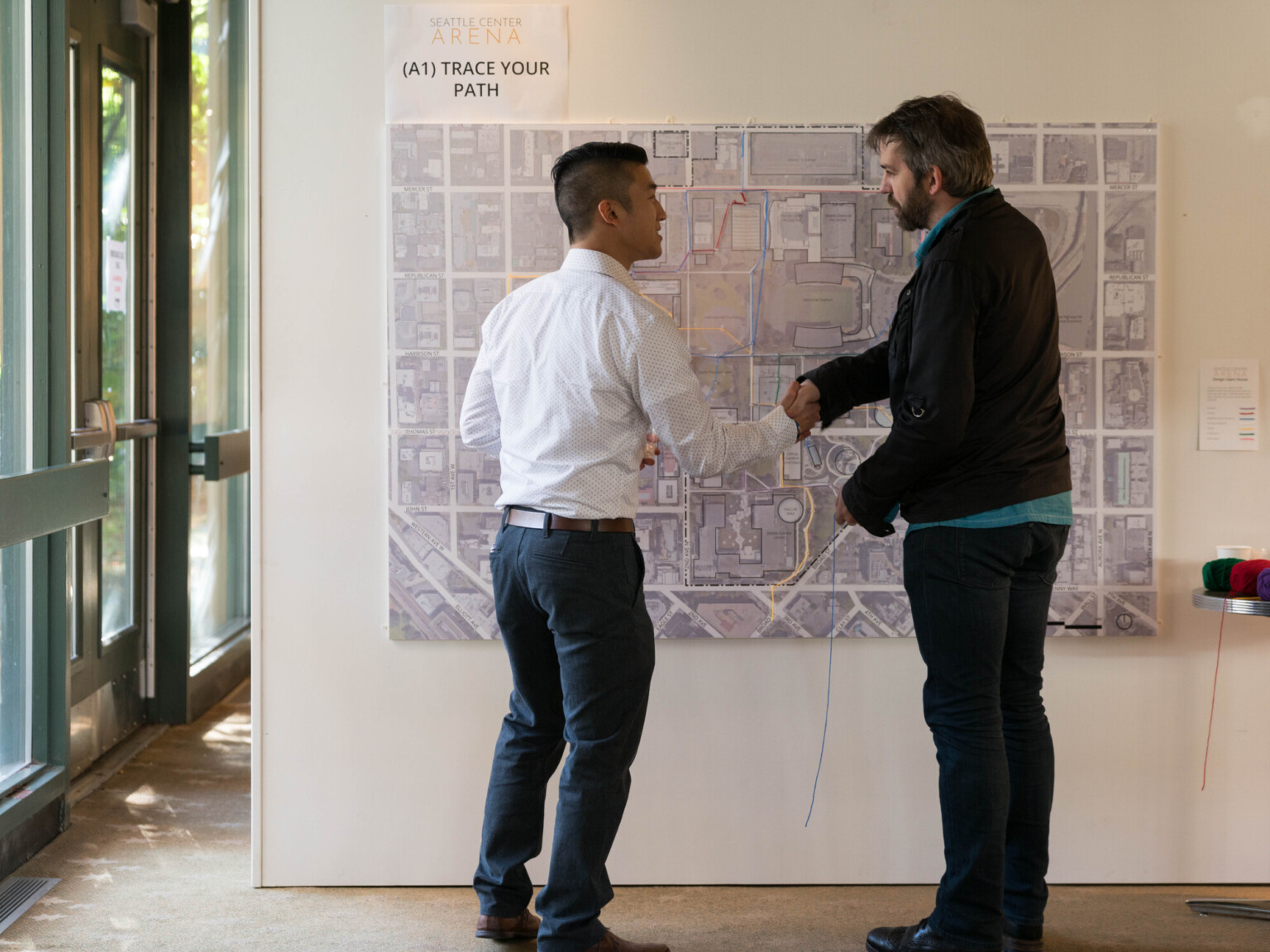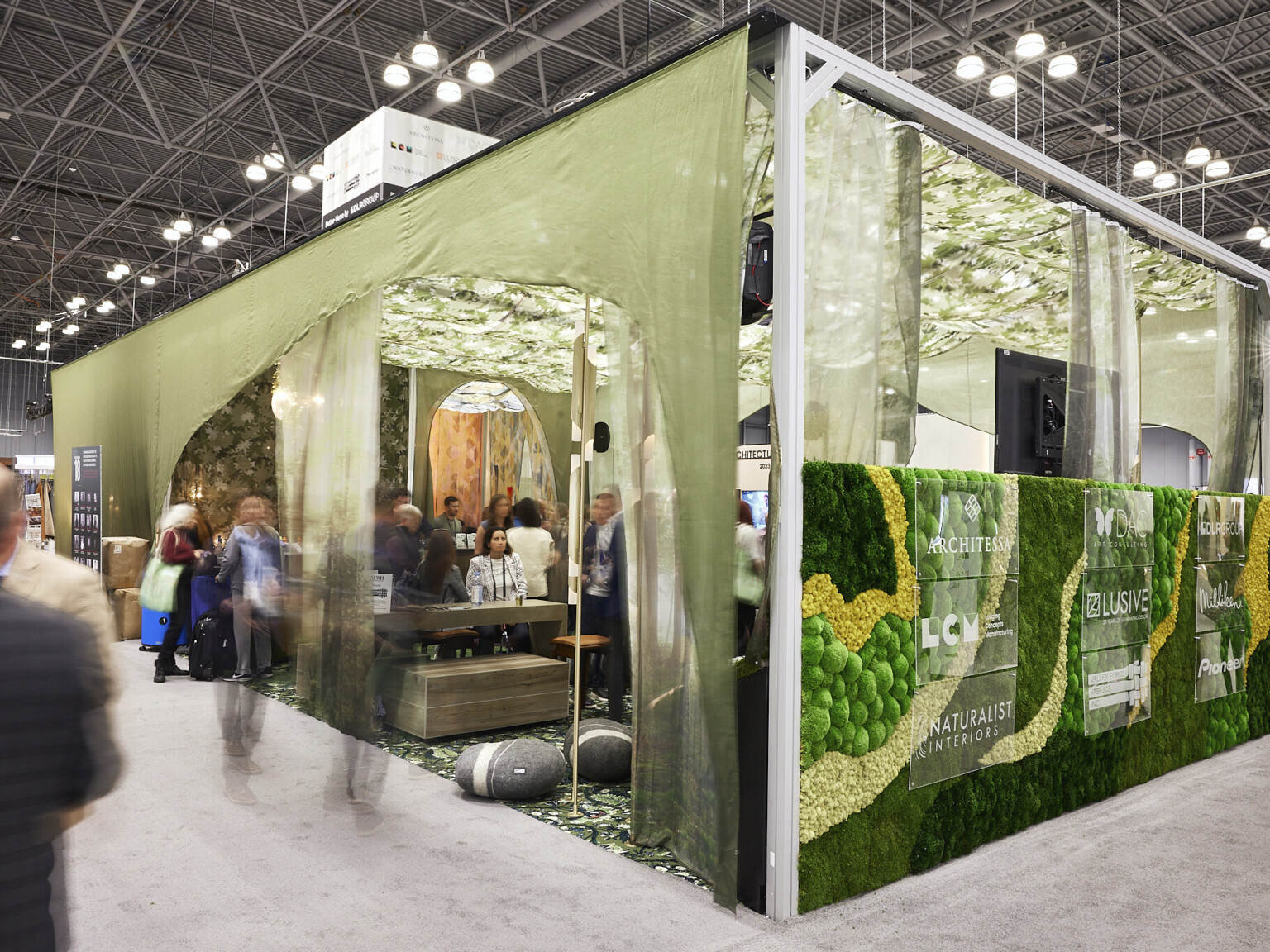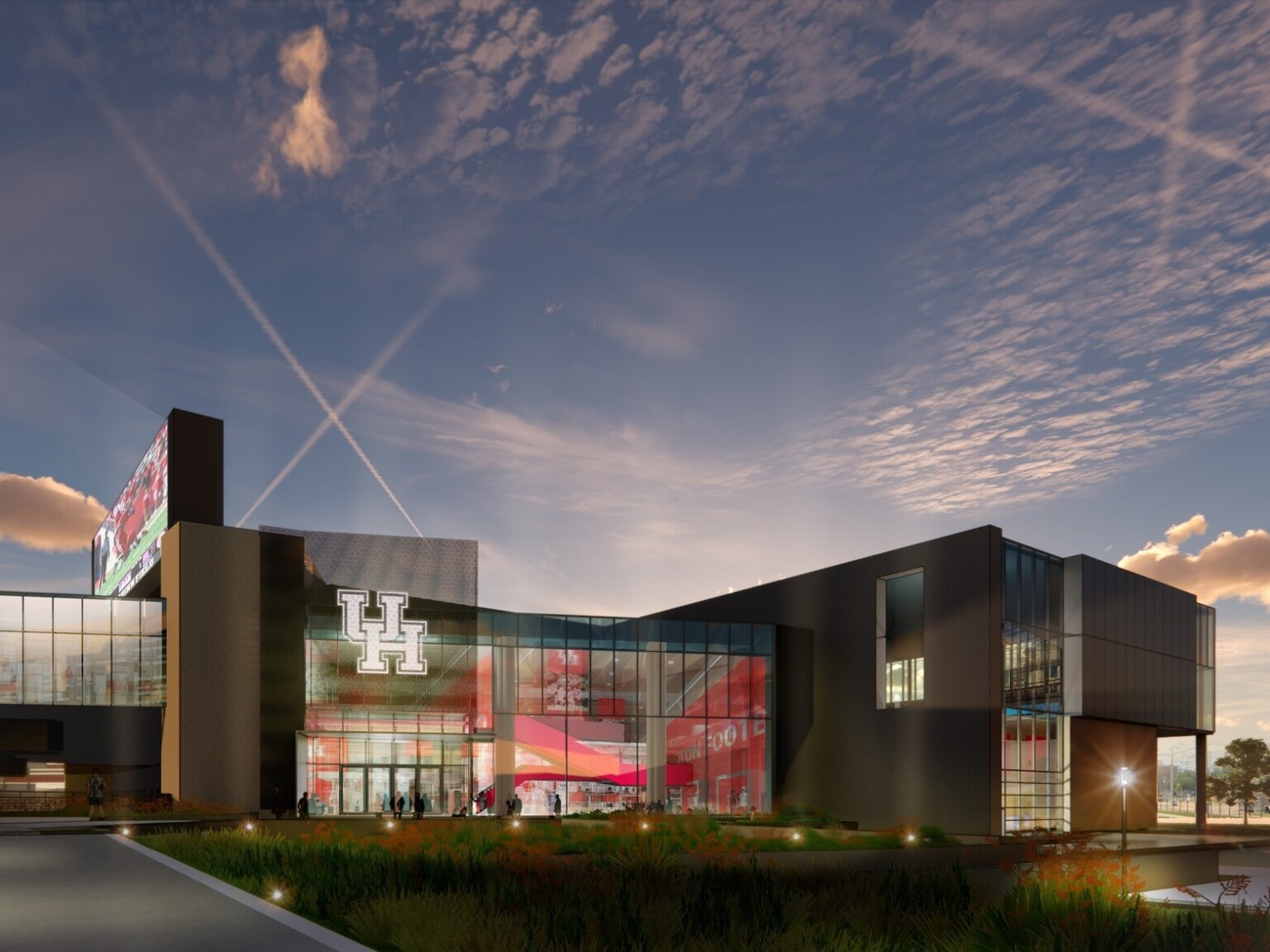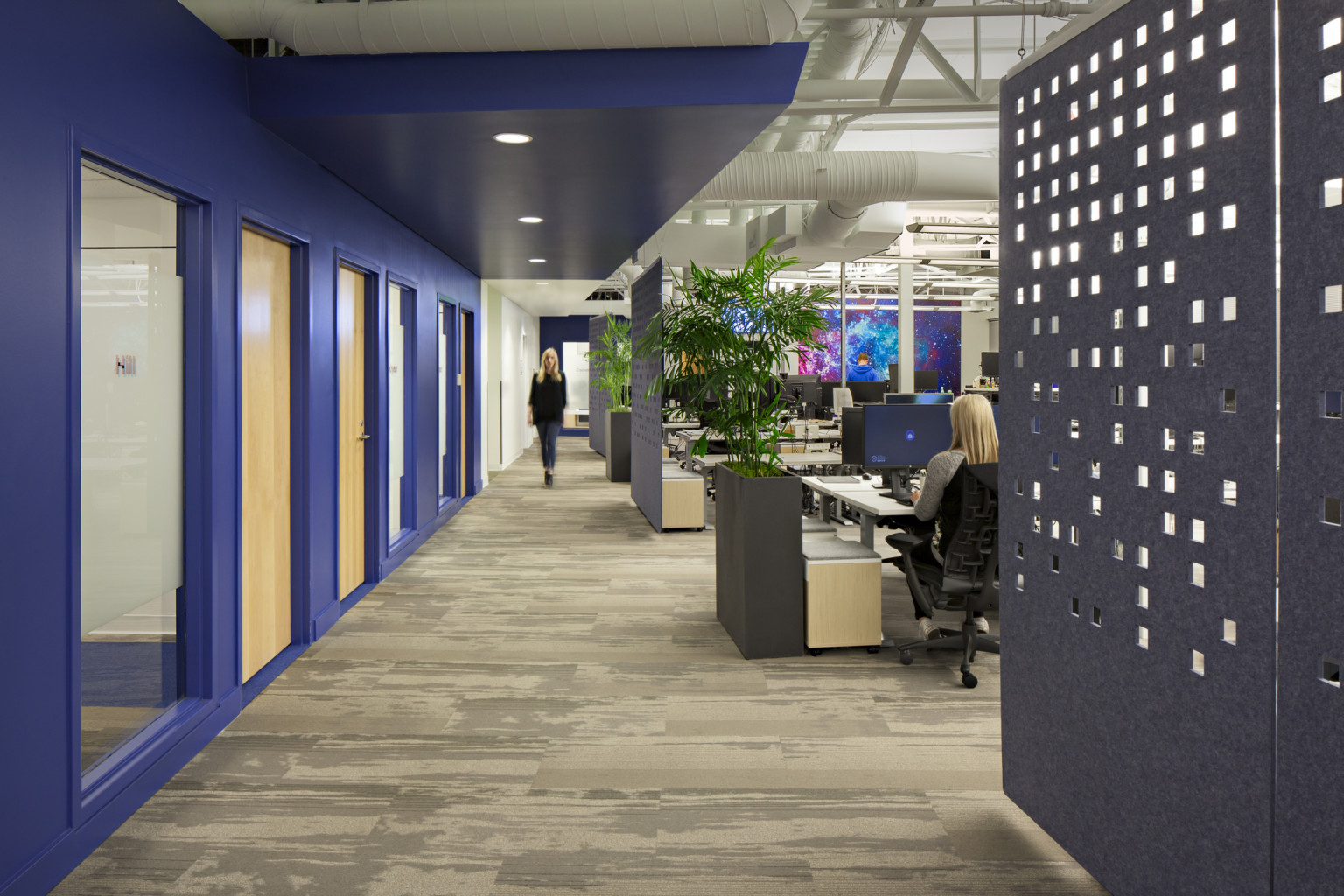
Q+A: The Psychology of Workplace
Here is my interview with Sally:
As workplace designers and strategists, our goal is to best align people and place to drive performance. We appreciate that we’re designing for a wide variety of personality types in any organization and our challenge is to create a space that is supportive of the diverse collective. Have you been able to draw clear connections between personality types and preferences in the workplace?
I think the best starting point is the difference between the experience of extraverts and introverts in the workplace. While we’re all somewhere on the continuum between the two extremes with a blend of different personality factors, there are many generalizations that we can apply to these two groups. For context reasons, let’s define both: extraverts are energized or get their drive to move forward from the people and places around them. Introverts get the same sort of energy boost from their own inner world and thoughts.
As a whole, extraverts don’t process all the sensory information available to them, while introverts register much more of what’s going on around them. As a result, an environment that an extravert might find optimally stimulating is one that can be overwhelming for an introvert. That said, both groups will, to varying degrees, be distracted by nearby conversations in languages they understand and will pay attention to the movements of people near to them. We can’t help but do this. Our brains developed eons ago to optimize our survival, making it nearly impossible to ignore the things happening around us. Introverts and extraverts face similar challenges when they need to do work that requires focus and concentration, and they need workspaces that align with not only what they think they need and want, but also what they actually need to be truly effective.
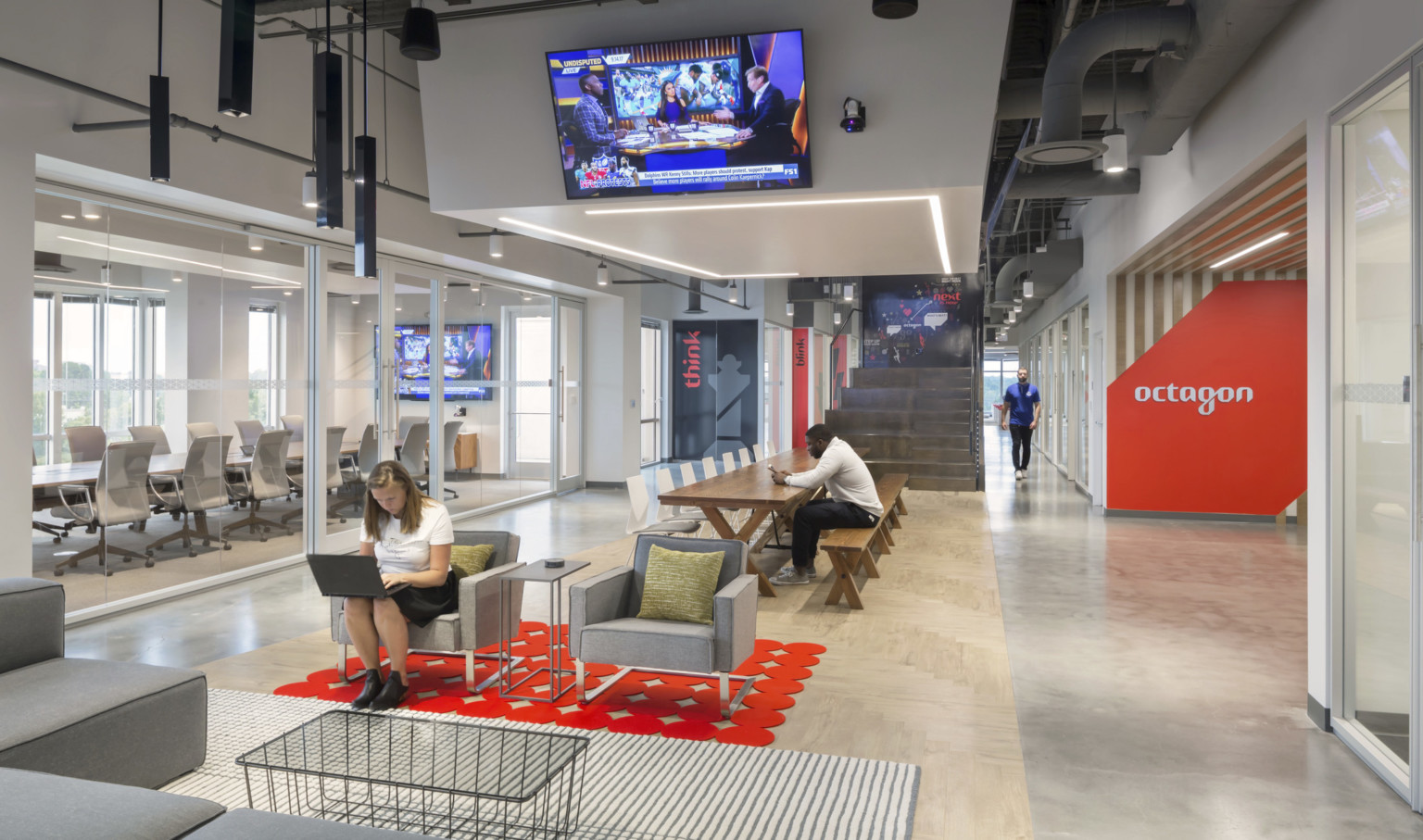
And just like individuals in the workplace are all different, every organization is unique based on its work type and style, collection of employees, and culture.
Yes. One thing to remember is that people with relatively similar personality profiles often do the same job so you can, to some extent, design for that personality. As an example, it is generally true that sales people are extraverted so in an organization or office focused primarily on sales, one can design for extraversion to optimize their performance. But it’s important to remember that even “extravert-heavy” groups will still have a mix of personality types.
I think that’s why an activity-based design philosophy and approach is important. By uncovering each client’s unique mix of work styles, personas, and shared values, we can develop an environment that provides employees with a variety of spaces to choose from that best suit their work style and activities over the course of the day.
This is important. Choice indicates respect and that the organization trusts what its employees are doing. Choice allows employees to align their space with how they do their job, and how they should do their job. For example, when selecting a space to do focused work outside of an employee’s workspace, regardless of personality type, a person might select a non-lounge space because it communicates internally and externally that the individual is doing serious, thoughtful work.
What we’re talking about here are the non-verbal cues that people receive from the space, which is one of the reasons why it is so important to involve users in the design process and respect what they have to say. People get a real boost when they feel respected by their organization. The design of the workplace absolutely sends messages to employees how they are valued, and people put much more trust in these messages than a mission or vision statement. When they feel valued, employees will often put in extra effort and it’s often that extra effort can be the deciding factor in terms of success or failure. I think we can often get caught up in workplace design details that really aren’t as fundamental as the core, non-verbal messages being sent to people about what the organization thinks about them.
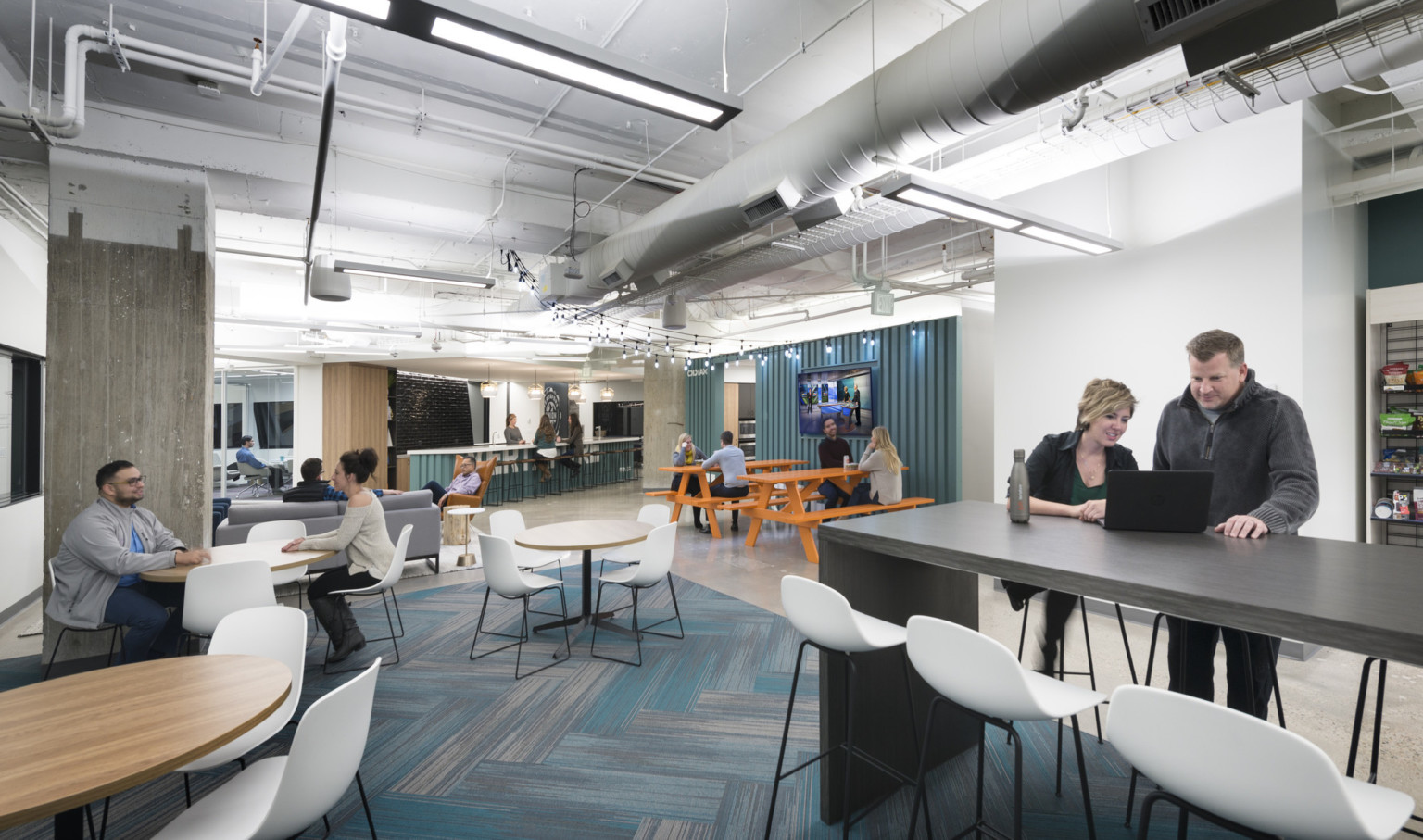
Through post-occupancy surveys, we have uncovered an interesting theme: While people want choice in the workplace and recognize when they have more choice of where to work based on the task, many don’t take advantage of working in different settings throughout a day or over a week. From a psychological perspective, why do you think that is?
We first need to understand where an organization is and where you’re asking its staff to shift to as they move to a choice-based workplace. When employees have had one primary workspace that supports most of their work activities, and then they are offered an assortment of spaces in which to do the same job, it takes getting used to this new-found choice. The potential cultural overlay of “if you’re not at your desk, then you aren’t working” is also something that might come into play. People and cultures evolve slowly. An organization can decree a new way of working but employees will still interpret this message in the context of their existing culture. It’s also important when providing choice that the spaces provided are in alignment with the way people work: We must truly listen when employees tell us what they need to do their job and how they do their job. The greater the alignment of space types with work activities, the more likely people will adopt new behaviors and utilize this choice.
This is exactly the reason it’s important to integrate change management messaging as part of the design and delivery process to ensure people are prepared and empowered to make the shift. Another interesting theme is that while increased choice, flexibility, and mobility within the workplace is desirable, having a dedicated, individual work space continues to be an important element of employee satisfaction. Is there behavioral psychology behind this as well?
Yes, it’s all about territory! Human brains do change over time but they evolve very slowly. When we’re thinking about how our brains work today and what’s important to us, you have to think about what was important to our distant relatives 100,000 years ago. At that time, territory was the space we knew well and we developed specific behaviors to protect and control it. Vestiges of those behaviors remain. Having a dedicated workspace in an office signals that a particular seat and space belongs to an individual, which imparts a sense of control over territory. And from the social perspective, people develop patterns of behavior and systems that are good for those who are generally in their immediate space. These agreements and systems often lead to optimized performance.
These agreements are so important, especially in open work environments where noise disruptions continue to be one of the most common complaints related to satisfaction and performance. There are many ways to optimize acoustic design, from zoning individual and collaborative spaces to sound-masking systems. From your perspective, are there other ways to create an environment supportive of the way our brains work?
Acoustics are really important and it’s about having the right sort of sounds within an environment and creating an optimal stimulation level. If you’re overhearing other people’s conversations, that can have a major impact on performance because our brains are wired to tune in to those noises. The sound of a meadow on a lovely spring day, however, can be a very supportive sound in the workplace. Research has shown that nature sounds amplified in appropriate spaces within the workspace are great at breaking down stress levels and helping people feel calmer. You have to think about our ancient lives on the savannah again: we were immersed in sound, constantly receiving sensory inputs from nature. We were not in a sealed box. Extrapolating what we can from those experiences years ago tells us why being in a space that is too quiet in problematic.
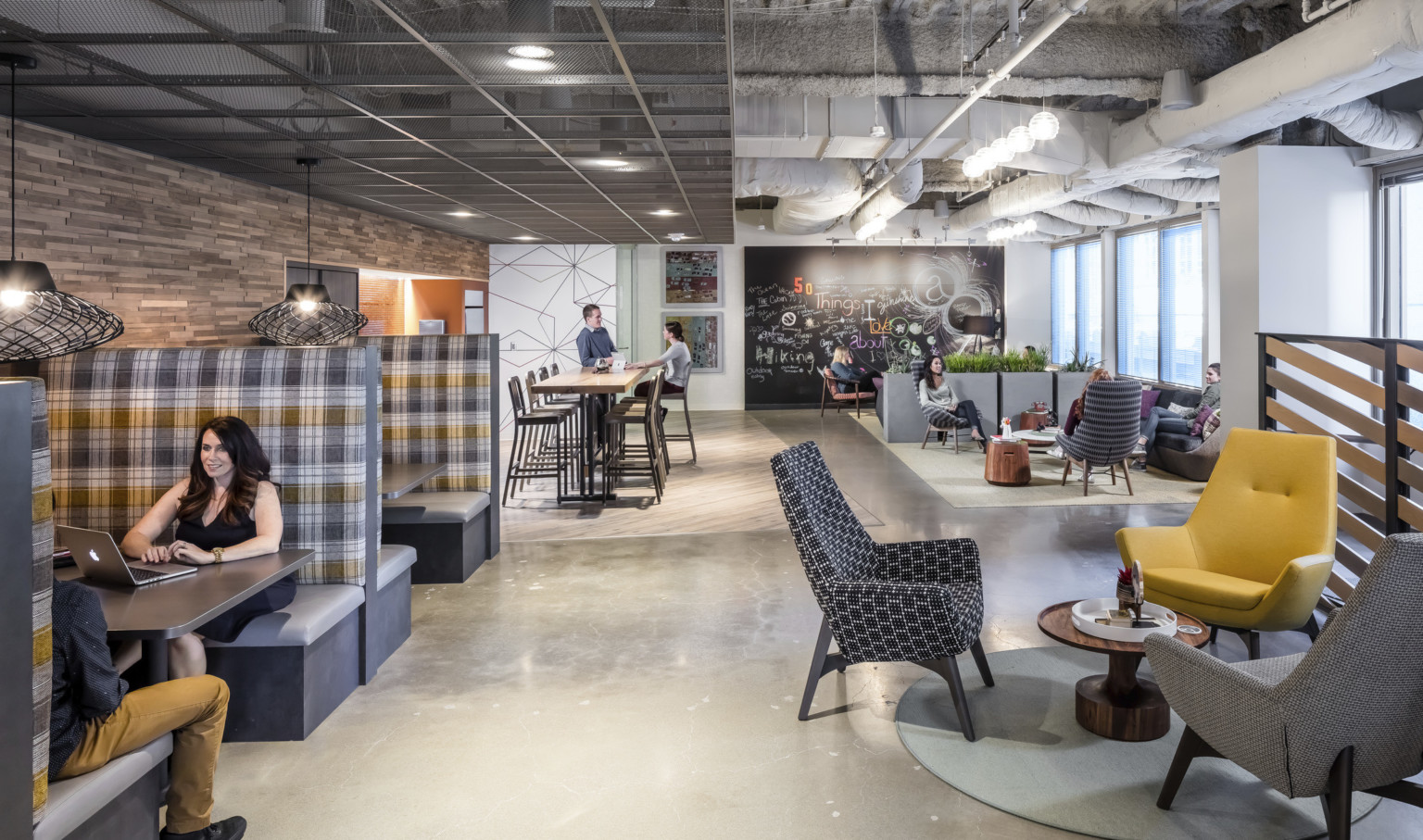
Organizations today want their workspace to support productivity, engagement, well-being, creativity, innovation—all qualities that are considered drivers of both individual and business performance. From your perspective, how does physical space inform and influence the behaviors that individuals need to embody to be high performers?
Making sure a space is consistent with how things get done within an organization is important. You have to align the environment with the work tasks and activities of an organization while also thinking about other space-related requirements that are a step beyond that. For example, in a workspace, people need opportunities for psychological restoration after doing exhaustive knowledge work. They need to be able to look at nature, look at something else that will help them restock their mental energy levels after they’ve been exhausted. There is a wealth of research on the impacts of sensory elements in the workplace, from color saturation and brightness to scents, biophilia, and acoustics. As an example, research has shown that looking at the color red, even very briefly, has a negative effect on analytical performance, so you have to be careful about how you use red in a space if you are asking employees to do analytical work. This is just one example but it shows the advantage of connecting this research with design decisions.
We also need to acknowledge the varied types of work being done by people of different experience levels within an organization. A knowledge worker with 10-plus years of experience will probably do more thoughtful, focused work than a recent graduate new to an organization and industry. For the experienced worker, much of his or her work may be best done when there is less happening around them resulting in lower levels of stimulation. For the new hire doing work that may not require much focus, he or she will work best in a more stimulating physical environment in terms of sights and sounds; those sensory inputs will help them stay engaged with the task at hand. Think of the colloquial phrase of “zoning out.” If you’re doing something that doesn’t require you to focus and you’re in a space that really doesn’t have much going on acoustically or visually, it’s only a matter of time before you’re thinking about other things. Then before you know it, you’ve stopped doing the task or are potentially making mistakes. We have to thoughtfully align the environment with the varied tasks at hand to support optimal stimulation levels.
This is our overarching goal: to deliver the right environment to our clients on every engagement. Our team understands the importance approaching the design strategy and process with a people-first perspective in order to deliver value-added services to our clients and ultimately an environment that supports its people, processes, business drivers, and mission. The overlay of psychology and how we’re wired can only enhance those outcomes.
People who are designing the workplaces where individuals thrive are really becoming much more knowledgeable about environmental psychology. There has been a lot of research done over the years about how aspects of the physical environment – be they sensory or psychosocial – influence how people think and behave. It’s becoming more well known that this field of psychology exists and successful designers are incorporating principles of it into the spaces they develop. If you work from an environmental psychology base, it allows you to develop efficient and effective solutions more directly. Designers – just like everybody else—have preconceived notions about lots of things, which is ultimately how we avoid being overwhelmed by daily stimulants. When you’re doing research with people, you have to really think through what they are trying to convey, and you have to accept it without first applying your filter to it. Overlaying environmental psychology with design doesn’t stymie creativity but instead identifies paths that are more likely to be successful in achieving desired objectives. Organizations committed to the science behind design are creating spaces that are more likely to enhance people’s wellbeing.

